Basement finishing is a popular home improvement project. It can add valuable living space to your home, and it’s usually less expensive than adding an addition.
One of the most common questions we hear from homeowners who are planning to finish their basements is whether they should use drywall or some other type of wall covering.
In this article, we’ll answer that question and provide tips on how to finish basement walls without drywall.
Finishing a Basement without Drywall
Basement Finishing without Wall Studs
When you finish a basement, you don’t need to use wall studs. Some people choose different materials because they cost less money. People might use foam insulation panels or a combination of rigid foam and drywall tape.
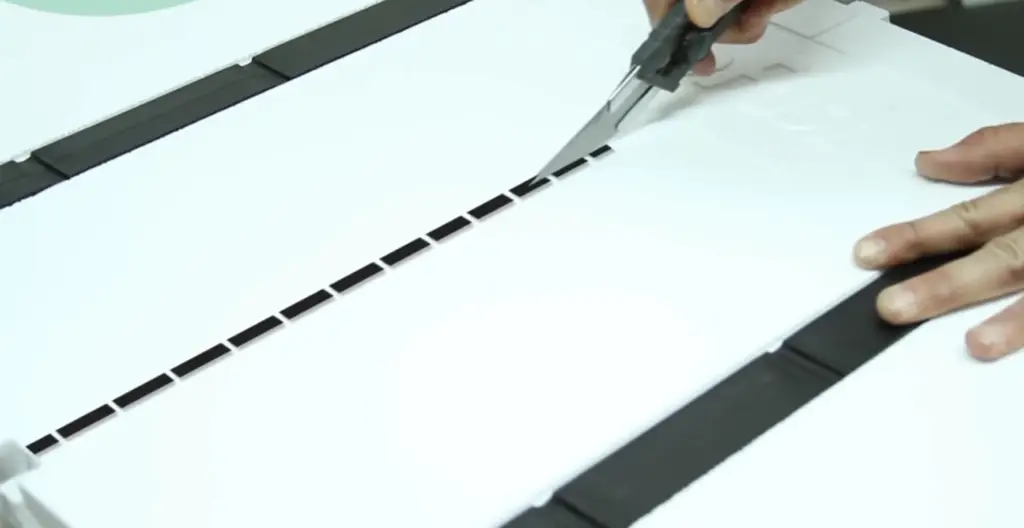
Use Steel Frames and Panels
Some people prefer to use steel frames and panels instead of traditional wood framing when finishing a basement.
Also, steel frames are not susceptible to rot or mould, like wood is. [1]
Use Furring Strips
Furring strips help to create a flat surface on your wall so that you can attach wall coverings. Furring strips are thin pieces of wood that you nail or screw into the wall. They usually come in the size 1×3, but other sizes may be available depending on what you’re doing.
Basement Finishing without Drywall
If you don’t want to use drywall when finishing your basement, there are several other wall coverings that you can consider. Some popular options include:
PVC Wall Panels: PVC wall panels look like regular drywall but they are made of sturdy and waterproof material, making them perfect for basements. They come in a variety of colors and can be painted if desired.
- Fiberglass Wall Panels: These panels are made from fiberglass that is treated with a fire-retardant finish and comes in a variety of colors. They are durable, easy to clean, and great for basements.
- Concrete Board Coverings: If you want a more industrial look, concrete board coverings are a great option. They are durable and easy to clean, but they can be more expensive than other wall covering materials.
- Stucco: Stucco is an inexpensive wall covering that looks like plaster but is much easier to apply and maintain. It’s very popular in basement finishing and comes in a variety of colors.
No matter what type of wall covering you choose, make sure that it will not be ruined by moisture or humidity. Basements can sometimes be damp, so you want to pick a wall covering that will last a long time without being damaged.
Use Basement Paneling
You can find different designs and colors of paneling that you like. It is easy to install and usually costs less money than drywall.
Most types of paneling do not get ruined by water or moisture, which makes them perfect for use in basements.
Hire a Custom Basement Finish Company
If you don’t want to take on the project of finishing your basement yourself, consider hiring a custom basement finish company. They will know exactly how to finish your basement walls without drywall and provide professional results. They may also be able to install additional features like insulation or lighting fixtures.
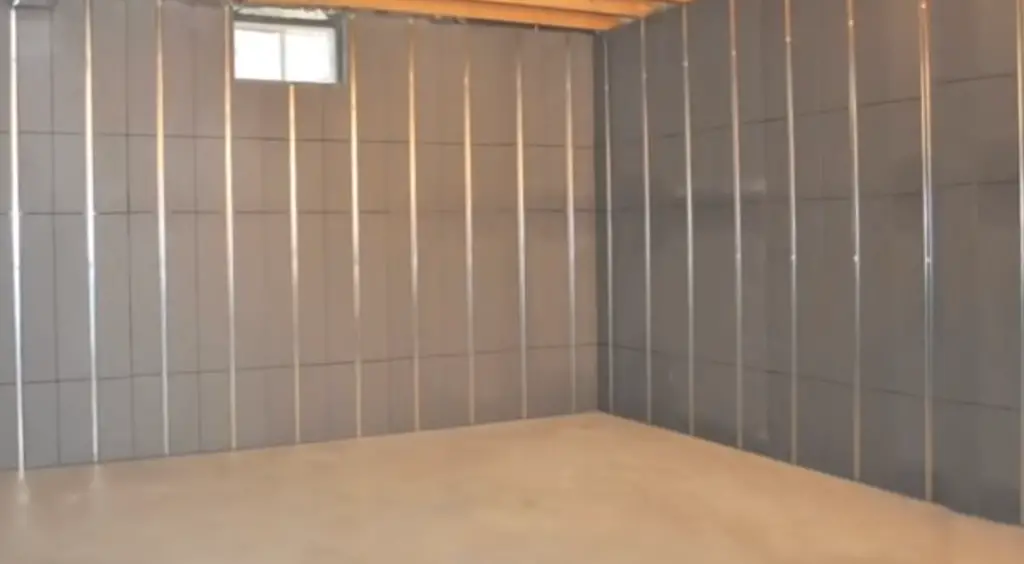
No matter which method you choose for finishing your basement walls without drywall, you’ll be able to create an attractive and unique space in your home. With careful planning and attention to detail, your basement can become a comfortable living area that you can enjoy for years to come.
What Makes Finishing a Basement Wall a Challenge for Drywall?
When it comes to finishing a basement wall without drywall, there are several challenges you may face.
- First, you cannot use regular drywall in the basement because it is usually damp and humid. This means that there is a lot of moisture in the air. If drywall is not installed properly, the humidity can make it swell and collapse.
- Second, the installation of drywall can be labour intensive and time consuming. If you’re not experienced in drywall installation, it may take a long time to complete the project.
- Drywall materials can be expensive if you don’t look for sales. Many homeowners choose to finish their basement walls without drywall because it is cheaper. You can still get a nice result without drywall by using other wall coverings. [2]
What Type of Walls Do Basements Have?
Most basements are built on a concrete slab, which means that the walls are typically made of either poured concrete or cinder blocks. Poured concrete is the most common type of basement wall and is used in many homes. Cinder block walls are less common but may be used in some older homes.
Basement walls also need to be insulated to ensure that the space is comfortable. Most homes have insulation installed around the perimeter of the basement walls and in between studs or joists for additional support.
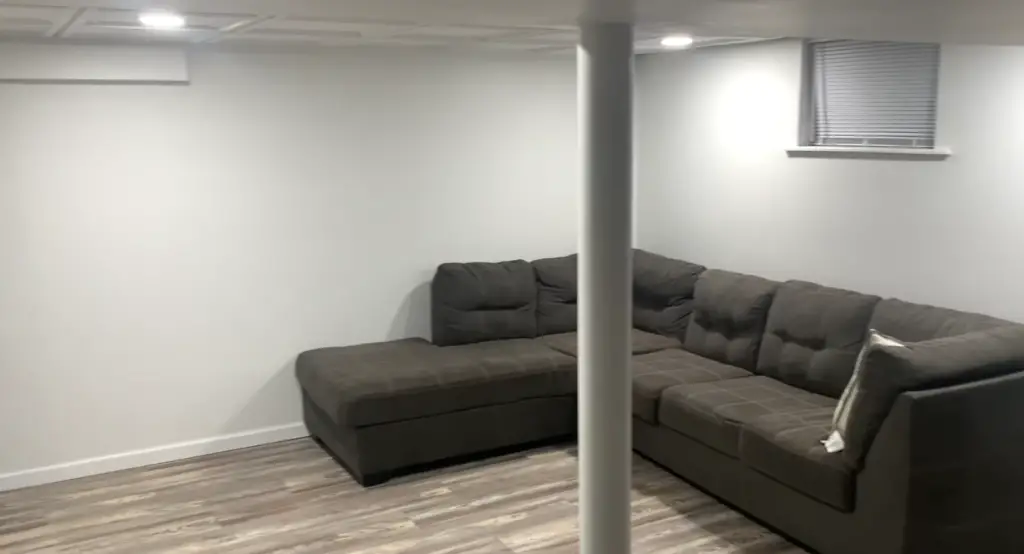
Masonry Wall
If you decide to finish your basement walls without drywall, there are many different types of wall coverings that will look great and last for years. Here are some popular options:
- Wallpaper: If you want a more decorative look, wallpaper is a great option. It’s easy to install and comes in a variety of colors and patterns.
- Paint: Painting is one of the most common ways to finish walls without drywall. You can choose from a variety of paints, including latex or oil-based paints.
- Tile: Tiles are durable and come in many colors, sizes, and shapes. You can create a unique design with tiles that will last for years without fading or staining.
- Masonry Wall: If you want to add texture to your walls without drywall, consider installing a masonry wall. This type of wall is made from brick, stone, or concrete blocks and can add a rustic, old-world charm to your basement.
- Wood Paneling: If you’re looking for a more natural look, wood paneling is an excellent choice. It’s easy to install and comes in many different styles, sizes, and colors.
Poured Concrete Wall
This type of wall is made from concrete mixed with sand, gravel, and other materials to create a durable surface that can withstand moisture and humidity in the basement environment.
In addition to its durability, poured concrete walls also offer easy installation and come in many different colors and textures. You can find panels in different sizes, shapes, and styles to make your basement look unique.
Cinder Block Wall
Cinder block walls are a good option for finishing a basement without drywall. This type of wall is made from concrete blocks mixed with cement powder, sand, and other materials to create a strong and durable wall.
Cinder block walls are easy to install and come in a lot of different colors, textures, and shapes. They work well for keeping sound from escaping or coming in, and they can help keep your basement warm.
Precast Panel Basements
Precast panel basements are a good way to finish your basement without using drywall. With this method, panels are made in a factory and then delivered to your home. They are installed directly on the foundation walls.
These panels come in a variety of colors, textures, and sizes and can be used to create unique designs. Precast panel basements are strong, durable, and require minimal maintenance.
Exposed Stone or Brick
If you want a more natural look, you could try exposing the stone or brick walls in your basement. This type of wall is made from stones or bricks mixed with mortar and can create an interesting, rustic look.
The exposed stone or brick will need to be sealed to protect it from moisture and humidity in the basement environment. You can find sealers that come in a variety of colors to match the color of your walls.
Drywall Alternatives for Basement Walls
Finishing your basement walls without drywall is possible with the right materials. With a little creativity, you can create a unique look in your basement and achieve good insulation and soundproofing.
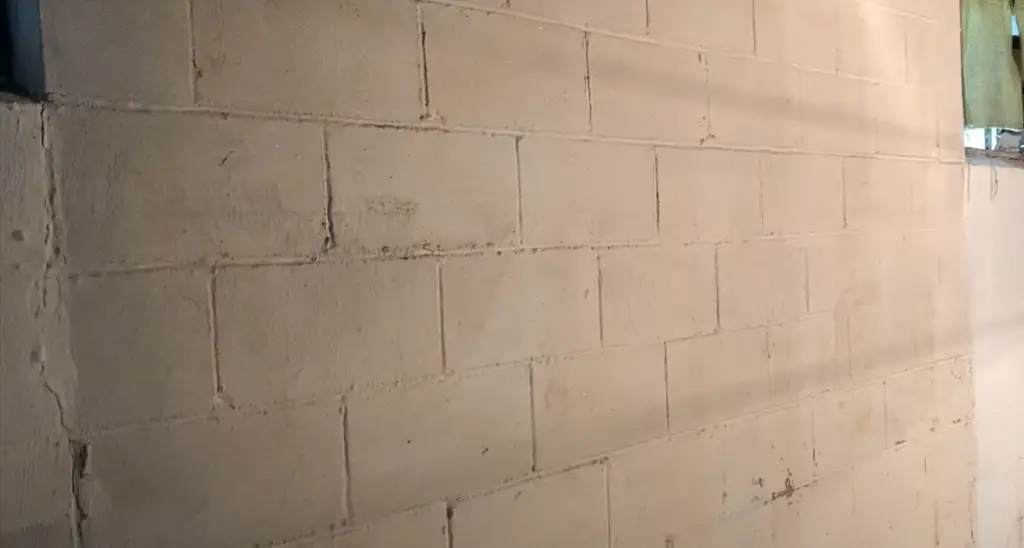
There are many ways to finish your basement walls, including wallpaper, paint, tile, wood paneling, poured concrete, cinder block, precast panel basements, or exposed stone or brick.
The right choice can make your basement look amazing and add value to your home.
Paint
One way to finish walls without drywall is by painting them. You can use different kinds of paint, like latex or oil-based paints. Painting is an easy and cheap way to change your basement walls and make them look different.
You can also use special painting techniques such as sponging, ragging, and dry brushing to create interesting textures and designs. If you want an extra layer of protection, you can use a sealer after painting your walls. [2]
Basement Panels
Basement panels are another option for finishing your basement walls without drywall. These panels are made of plywood and come in different sizes, shapes, and colors.
Basement panels are easy to install and do not require a lot of upkeep. They can also help keep the basement temperature stable and might reduce noise in the basement as well.
Wood Fiberboard
Wood fiberboard is another way to finish basement walls without drywall. This type of wall paneling is made from wood chips and other materials and comes in different colors, styles, and textures.
Wood fiberboard panels are easy to install and don’t require a lot of work to keep them looking good. They also help keep your basement warm and can give it a unique look.
Fabric Panels
Fabric panels are a great way to finish basement walls without drywall. Fabric panels come in different colors, styles, and textures, and can be used to create interesting designs on your walls.
These panels are easy to install and require very little maintenance. They also help reduce sound in the basement and can help keep it warm.
Finishing your basement walls without drywall is possible with the right materials and a bit of creativity. With these methods, you can create a unique look in your basement and achieve good insulation and soundproofing.
Vinyl and Wallpaper
There are other ways to finish your basement walls without using drywall. Vinyl and wallpaper are two good options.
Both vinyl and wallpaper can be installed easily, require very little maintenance, and help keep the basement warm. They can also help reduce sound and make your basement look more attractive.
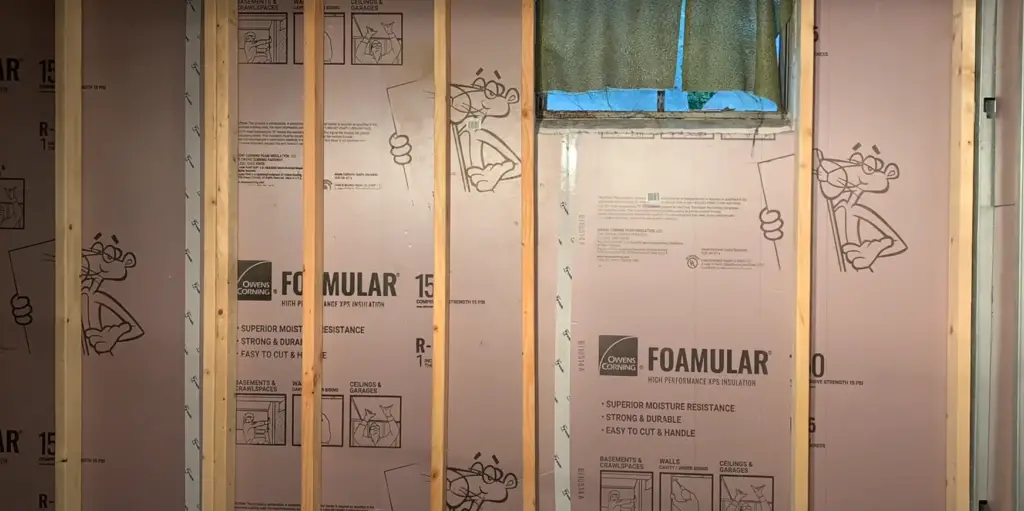
Stone Veneer
If you want to add a more natural look to your basement, you can use stone veneer. This type of wall covering is made from real stones and is easy to install.
Stone veneer walls are strong and won’t get ruined if they get wet. They also help keep the basement warm. You won’t have to do a lot of work to take care of them, and they can make your basement look pretty.
Pargeting
Pargeting is a great way to finish basement walls without drywall. It’s a type of plaster that allows you to create unique shapes and designs on your walls.
Pargeting is easy to install and does not need a lot of care. Pargeting also keeps the basement warm and can make it look nicer.
Exposed Brick
If you want to give your basement walls a rustic look, you can expose the brick. This means removing the drywall and leaving the brick exposed.
Exposed brick walls are strong, easy to keep clean, and don’t need a lot of work. They also look different from other walls and can help your basement stay warm.
Wood Paneling
Wood paneling can be used to finish basement walls without drywall. You can use wood paneling to create different looks for your basement, like rustic or modern.
Wood paneling is easy to install and maintain, and can help keep your basement warm. It also looks great and adds character to the space.
Peg Board
Peg board is another way to finish your basement walls without drywall. This type of wall covering is made from wood and can be painted or stained in different colors.
Peg board is easy to install and requires very little work to keep it looking good. It also helps keep the basement warm and can give it a unique look.
What Is the Most Affordable Way to Finish a Basement Wall?
The most affordable way to finish a basement wall is with wood fiberboard. This type of wall paneling is easy to install and doesn’t require a lot of work. It also helps keep your basement warm and can give it a unique look.

What’s the Best Way to Make a Cinder Block Wall Look Better?
One way to make a cinder block wall look nicer is to paint it or stain it. There are some paints and stains that work better on concrete walls because they help protect the wall from water and other things that could damage it.
How Do I Finish a Basement Wall That Leaks?
If your basement wall is leaking, you need to make sure that the source of the leak is fixed first. Once the problem has been addressed, you can finish the wall with waterproof materials such as vinyl, stone veneer, or pargeting. This will help keep your basement dry and protected from future leaks.
What’s the Best Way to Finish an Uneven Basement Wall?
The best way to finish an uneven basement wall is with a flexible material such as vinyl or wallpaper. These materials can be easily installed and are able to fill in any gaps or crevices in the wall.
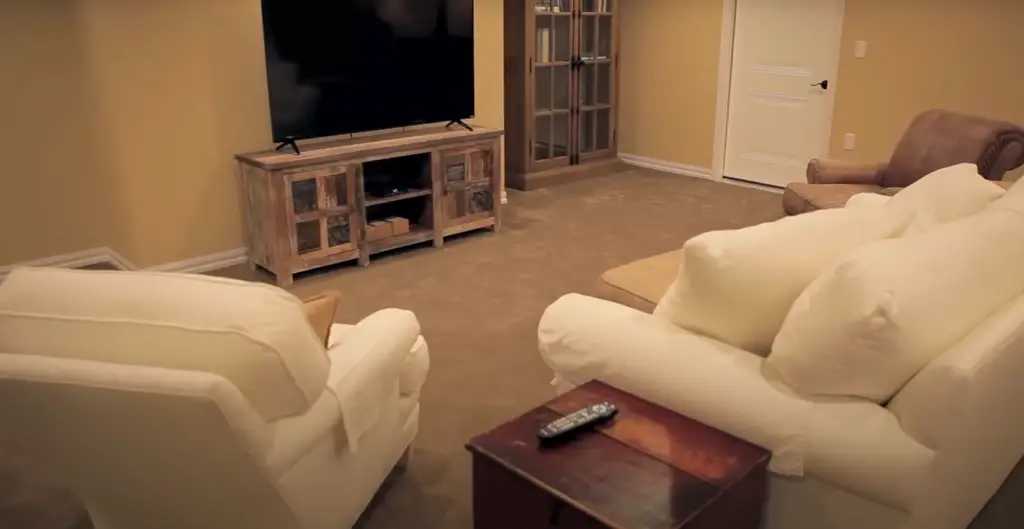
They also come in a variety of colors and patterns, so you can customise the look of your basement.
FAQ
How do you cover an unfinished basement wall?
There are lots of ways to cover up a basement wall that isn’t finished. You could use vinyl, wallpaper, stone veneer, pargeting, exposed brick, wood paneling, or peg board. These materials are easy to put up and don’t need a lot of care.
What type of material is best for a basement wall?
The best type of material to use for a basement wall depends on what you want the wall to look like and how much care it needs. Some popular materials include vinyl, wallpaper, stone veneer, pargeting, exposed brick, wood paneling, and peg board.
Is drywall the only way to finish a basement wall?
No, you can use other materials to finish your basement walls instead of drywall. Some examples are vinyl, wallpaper, stone veneer, pargeting, exposed brick, wood paneling and peg board. These materials are easy to install and don’t need a lot of care.
How can I cover my concrete basement walls?
There are several ways to cover up concrete basement walls. You could use vinyl, wallpaper, stone veneer, pargeting, exposed brick, wood paneling or peg board. These materials are easy to put up and don’t need a lot of care.
How do you make an unfinished basement livable?
You can make an unfinished basement livable by adding insulation, waterproofing it, and finishing the walls with one of the materials mentioned earlier. You should also add lighting and flooring to the room as well.
Lastly, you should consider adding furniture and other decorations to make the space comfortable for living in.
Is it OK to paint concrete basement walls?
Yes, it’s OK to paint concrete basement walls. There are some paints and stains that work better on concrete walls because they help protect the wall from water and other things that could damage it.
You should also make sure there is proper ventilation when painting the walls in order to avoid any health risks.
What is the cheapest way to finish an unfinished basement?
One cheap way to finish an unfinished basement is to use wood fiberboard for the walls. This type of wall paneling is easy to install. It also helps keep your basement warm and can give it a special look.
How much does it cost to finish a basement?
The cost of finishing a basement varies depending on the materials you use and the size of the project.
However, this is just an estimate and the final price will depend on your specific situation.
How do you waterproof a basement wall?
Waterproofing a basement wall can help keep your home dry and free from mould and mildew. The best way to do this is with a sealant such as epoxy or masonry sealer. You should also make sure to check for any cracks in the walls and repair them before applying the sealant.
Why are basement walls important to finish?
There are several reasons why it is important to finish your basement walls. For example, finishing the walls helps keep your home warm in colder months and prevents mold and mildew from growing. Additionally, it makes your basement more livable and can increase the value of your home if you ever decide to sell it.
Why is drywall a popular choice for basement walls?
Drywall is a popular choice for basement walls because it is easy to install, relatively inexpensive, and provides good insulation. Additionally, it can be painted or wallpapered to give the space more character. Finally, drywall helps protect your home from water damage and can help reduce noise levels in the basement.
Which material is best for finishing basement walls?
The material that is best for finishing basement walls will depend on your specific situation. For example, if you are looking for something that is easy to install and won’t need a lot of upkeep, then you may want to choose vinyl, wallpaper, stone veneer, pargeting, exposed brick or wood paneling.
Alternatively, if you are looking for something more durable, then drywall may be a better option. Ultimately, the best material for your basement walls will depend on your budget and preferences.
Are there any other tips for finishing basement walls without drywall?
Yes, there are a few other tips for finishing basement walls without drywall. For example, you should make sure to use proper insulation to keep the room warm and reduce energy costs.
Additionally, it is important to waterproof your basement walls in order to protect them from moisture. Finally, it is a good idea to use vapour barriers and sealants to help prevent mold growth.
Does painting basement walls help protect them?
Yes, painting basement walls can help protect them from water and other things that could damage them. It is important to use paint and stains specifically designed for concrete walls in order to ensure proper protection.
Additionally, you should make sure there is adequate ventilation when painting the walls in order to prevent any health risks.
Do I need to hire a professional for finishing basement walls?
It is not necessary to hire a professional for finishing basement walls, but it may be helpful if you need assistance with the project.
Hiring a professional can ensure that the job is done correctly and will help save time and money in the long run. Additionally, they can give advice on what materials and techniques are best for your project.
Is it hard to finish basement walls without drywall?
No, finishing basement walls without drywall is not too hard. With the right materials and instructions, most people can do this project themselves.
But it is important to do research first to make sure you are using the best materials and techniques for your situation. If you have trouble, it is always a good idea to get help from an experienced professional.
Can finishing basement walls without drywall be done on a budget?
Yes, you can finish basement walls without drywall and stay within your budget. There are many cheap materials and techniques that you can use to complete the project.
When choosing your materials, look for items that are durable and won’t cost too much money. Additionally, you may want to consider reusing items or shopping for discounts to save even more money.
How can I make my finished basement walls look great?
There are many ways to make your finished basement walls look great. For example, you can use paint and wallpapers to add color and style. Additionally, you can incorporate decorative elements such as tile, wainscoting or paneling to give the space more character. Finally, adding some lighting fixtures can help highlight any features and make the space look even more inviting.
Why finish basement walls without drywall?
There are some benefits to finishing basement walls without drywall. It can be cheaper to use other materials such as wood paneling, vinyl or wallpaper.
These materials are also more durable and water-resistant so they will last longer and require less maintenance. You also get to choose different textures, colors and designs that match your taste which can create a more inviting space.
Useful Video: Menards-InSoFast Basement
Conclusion
Basement finishing doesn’t have to be a headache. With these tips, you can easily finish your basement walls without resorting to drywall. Just remember to stay safe and take your time, and you’ll be well on your way to enjoying your newly finished basement in no time. Thanks for reading!
References
- https://homerepairgeek.com/wall-repair/finish-basement-without-drywall.html
- https://weekendbuilds.com/finishing-basement-walls-without-drywall/





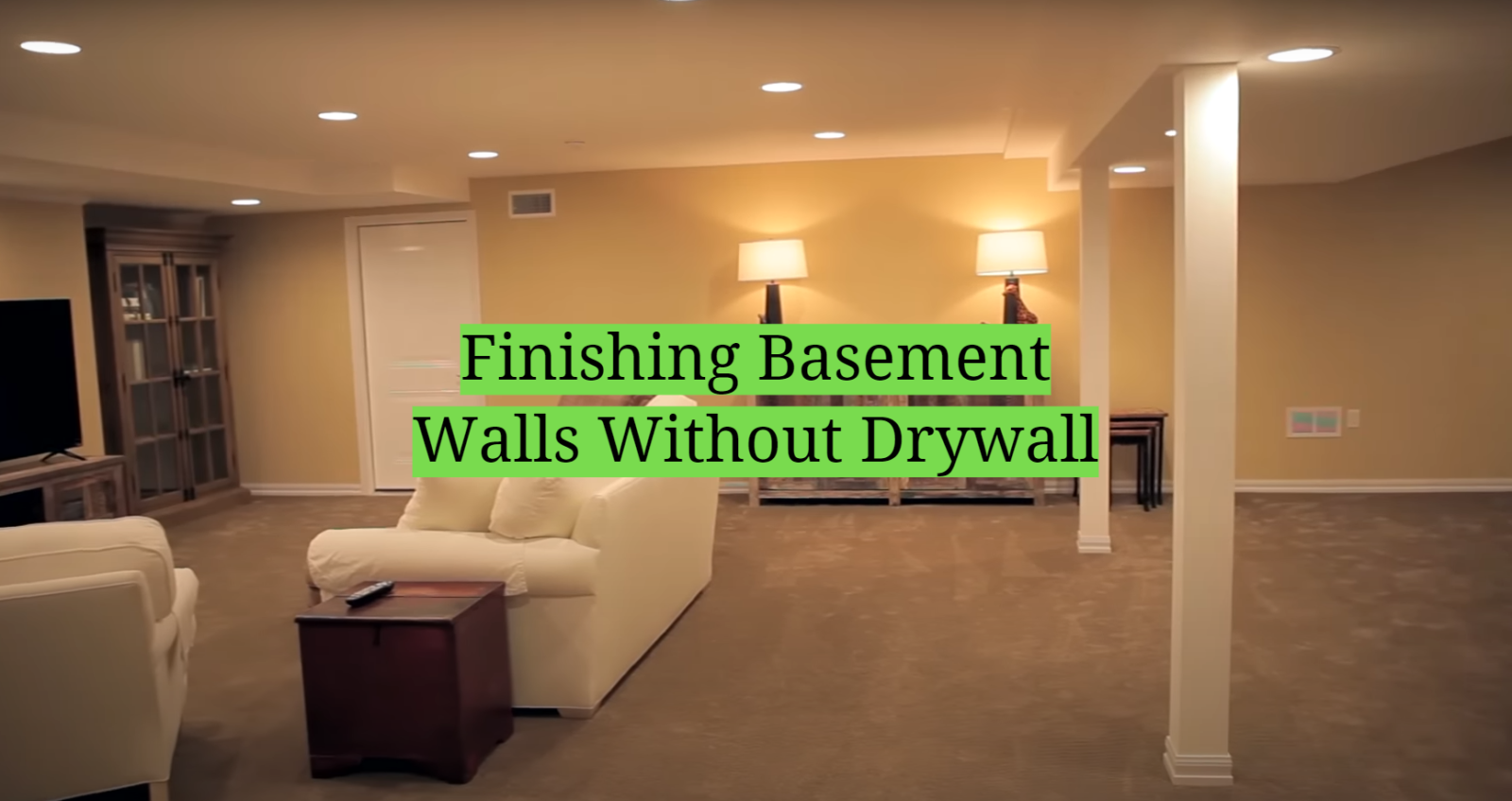




Leave a Reply